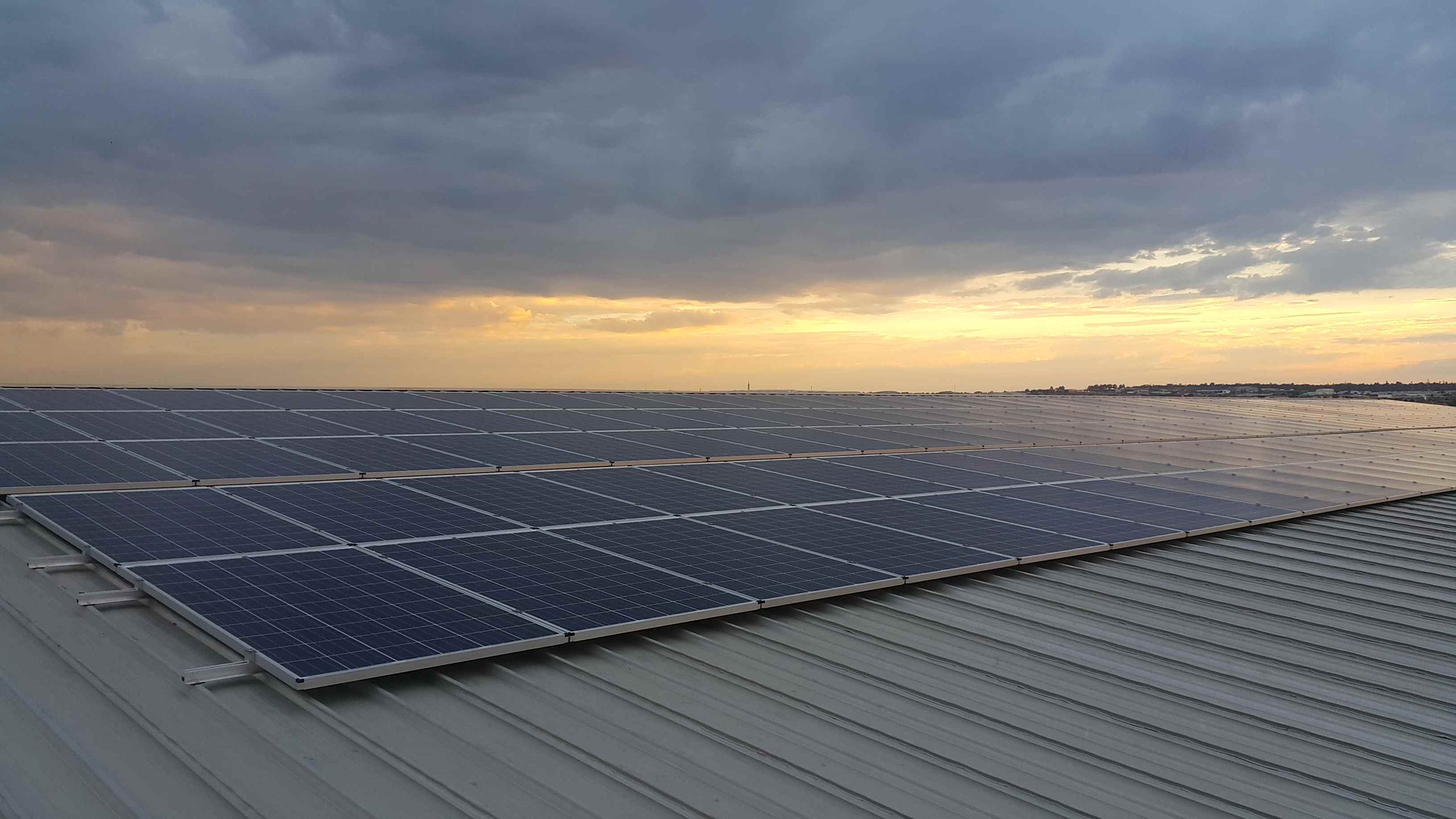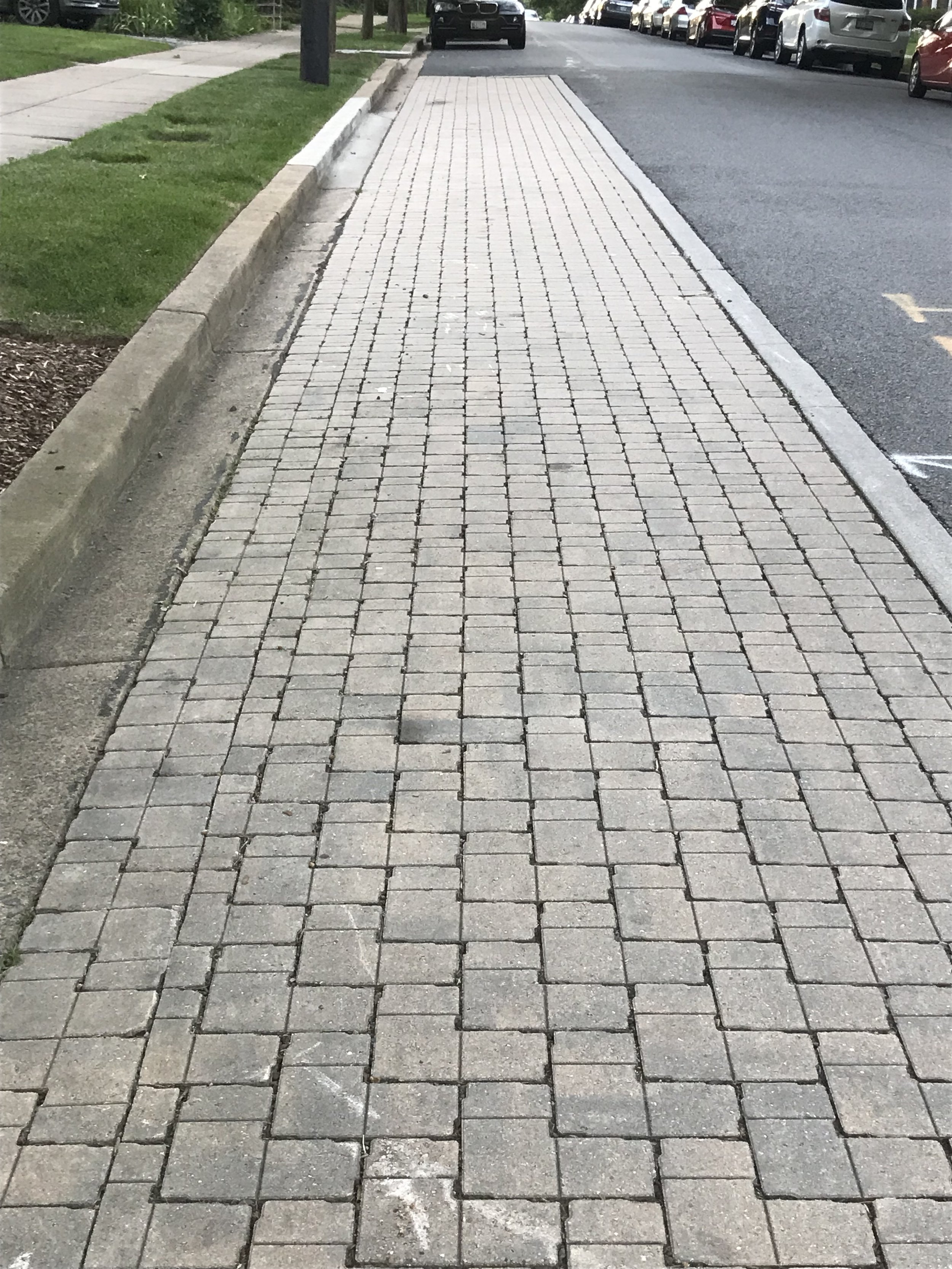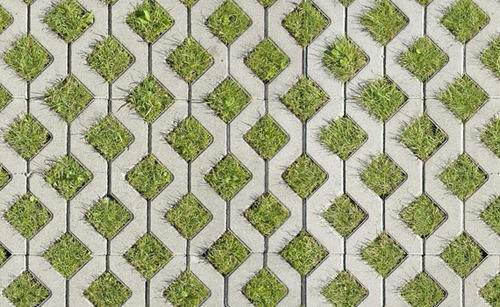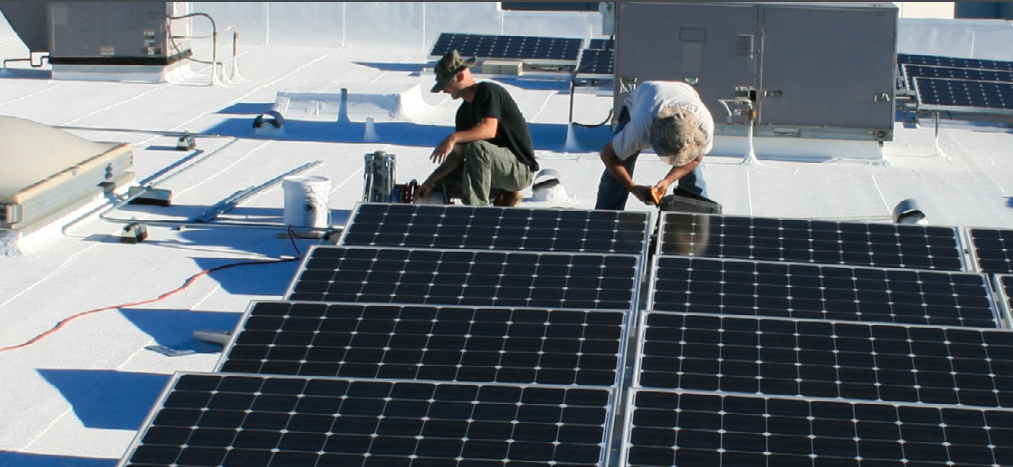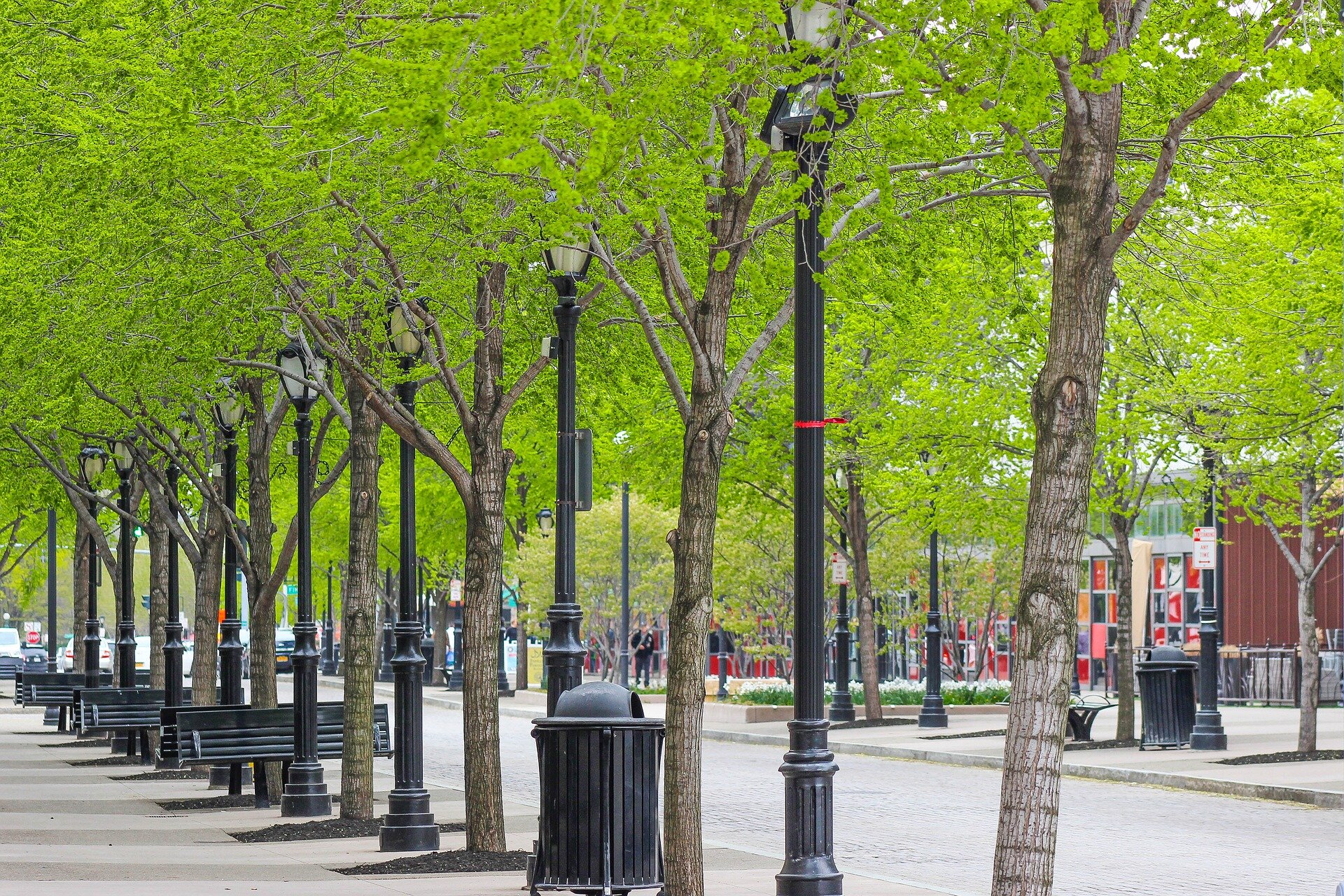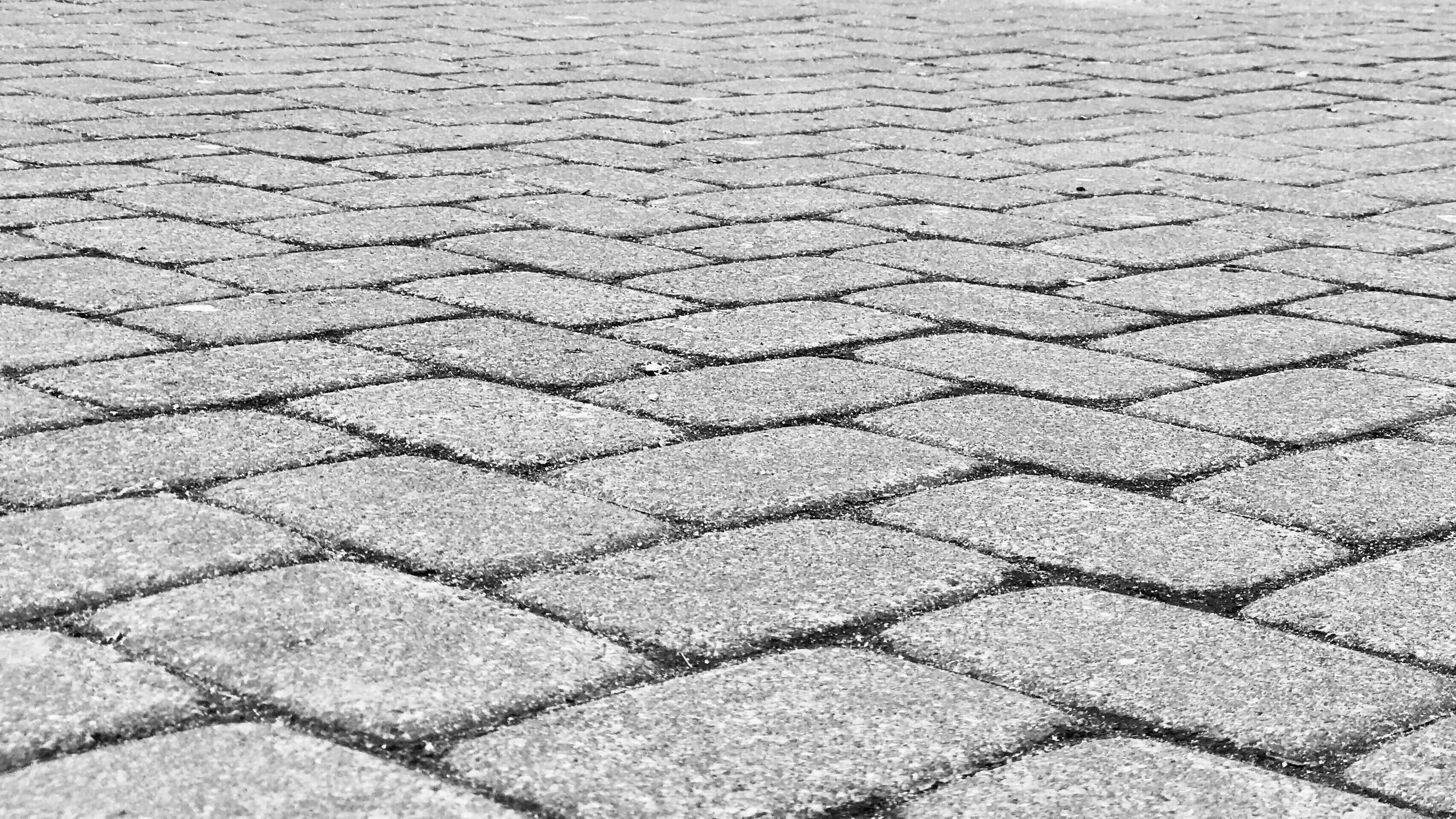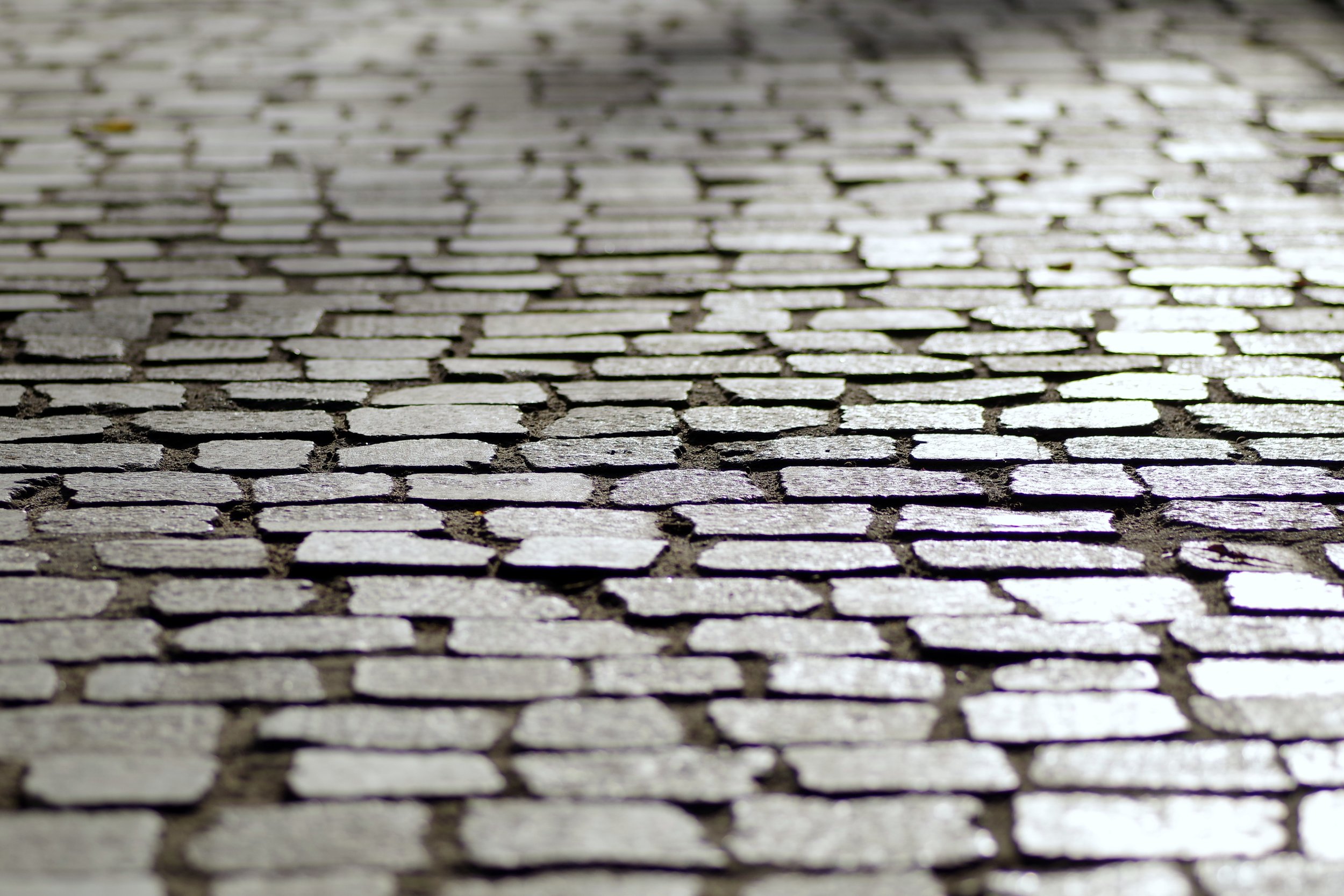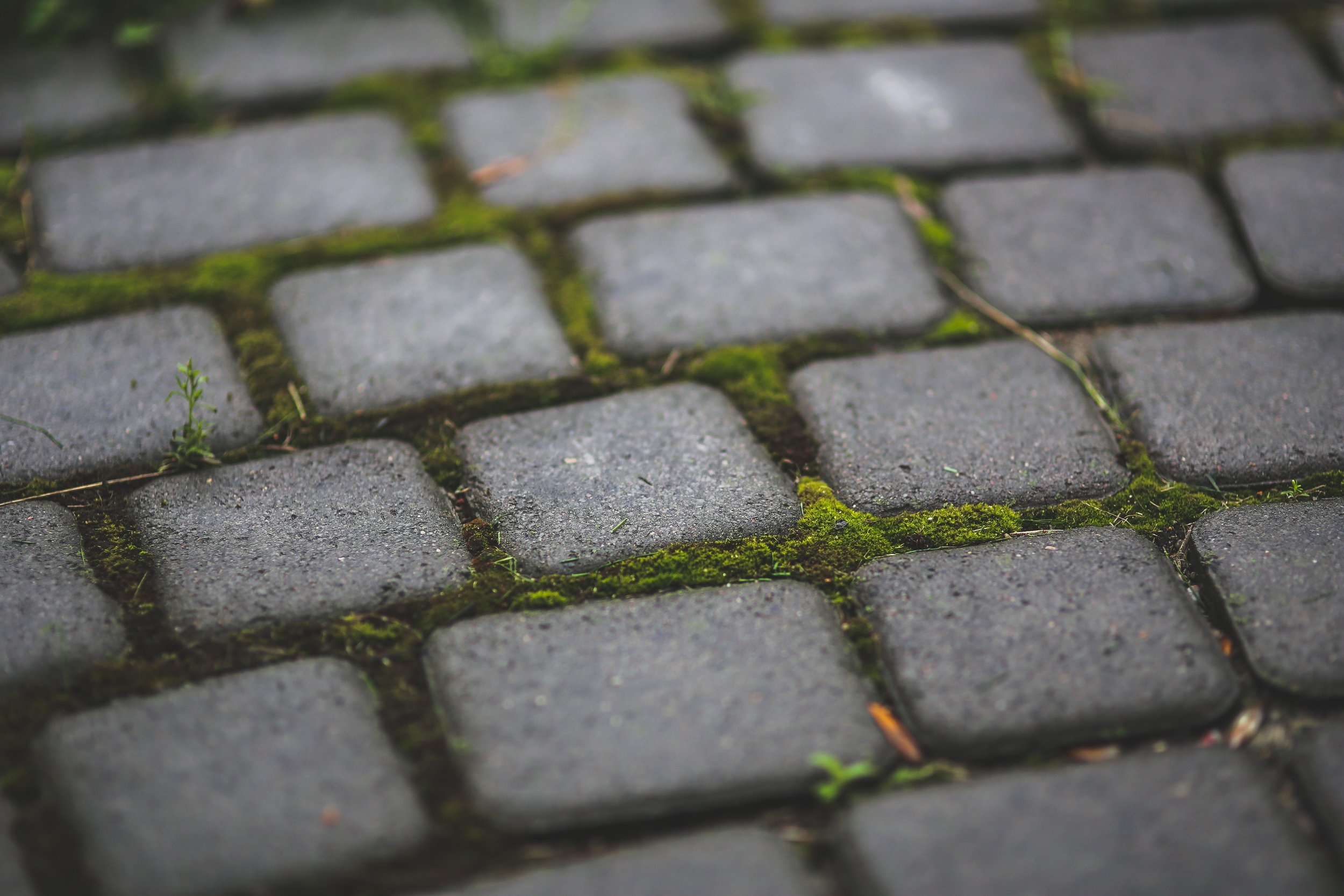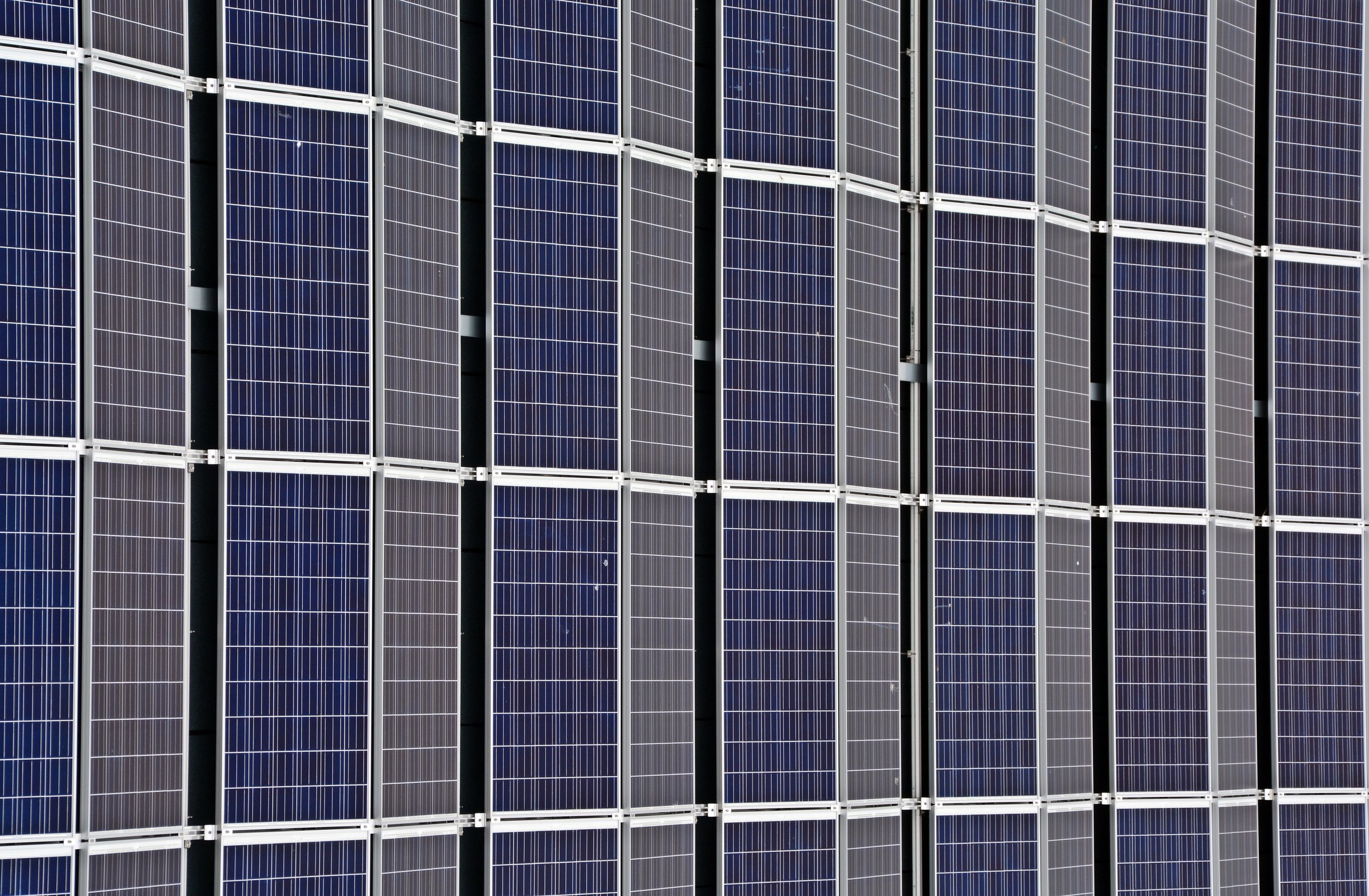What Is A Smart Surface?
Smart Surfaces include reflective (cool) roofs and pavements, porous and permeable pavements, green roofs, solar PV, trees, and combinations of these surfaces.
This page briefly overviews each surface technology, including how they work and the benefits they provide over conventional surfaces. For more information on calculating costs and benefits, see the pages and links provided beneath each surface’s description.
watch the smart surface transformation story
Reflective (Cool) Roofs & PAVEMENTS
Source: US DoE, Lawrence Berkeley National Lab
Cool roofs are light-colored and engineered to reflect most sunlight, reducing the heating of outdoor air. Traditional dark-colored roofs absorb more of the light that falls on them, radiating heat into the building and the surrounding air, which increases cooling costs and energy consumption while decreasing comfort.
Benefits of cool roofs:
Less heat emitted into outdoor air
Lower energy costs
Increased outdoor comfort
Reduced pollution (slower formation of ground-level ozone)
Less heat transferred into building
Lower energy costs (reduced demand for indoor cooling)
Increased indoor comfort
Reduced pollution (reduced demand on non-renewable power plants)
Other benefits, costs, and additional information on cool roofs can be found on pages 54-63 in Delivering Urban Resilience
The benefits and costs of cool pavements, including reduced pavement surface temperature and increased pavement lifespan, can be found on pages 87-100 of Delivering Urban Resilience.
Porous and permeable Pavements
Source: Resilient Jacksonville and SCAPE Studio
Porous and permeable pavements allow rain to recharge groundwater, reducing water pollution, stormwater runoff, and flood risk. Pervious pavement technologies include porous concrete, permeable pavers, and porous grid pavers with turf or gravel. In addition to reducing flood risk and water pollution, porous pavements can lower temperatures through evaporative cooling.
Benefits of porous pavements:
Reduced stormwater runoff
Lower flood risk
Lower water treatment costs
Reduced water pollution
Porous pavements and soil filter out stormwater pollutants
Decreased likelihood of stormwater overflow into sewers and bodies of water in the 860 US municipalities with combined sewer systems (for more information, see the US EPA’s CSS web page)
Other benefits, costs, and information on porous pavements can be found on Soils Matter, Get the Scoop!
Green Roofs
Source: EPA Green Roof Case Study
Green roofs are living, breathing entities that absorb rainwater, reduce heat absorption, and improve air quality. They cool buildings, reduce stormwater runoff, and provide urban plant and wildlife habitats while maintaining longer effective lifespans than traditional dark and impervious roofs.
Benefits of green roofs:
Less heat transferred into building
Reduced energy consumption and costs
Increased comfort
Less heat transferred into outdoor air
Increased outdoor comfort
Reduced pollution and GHGs into outdoor air
Plants directly reduce CO2, NO2, and PM2.5
Reduced stormwater runoff
Decreased water pollution, flood risk, and water treatment costs
Other benefits, costs, and additional information on green roofs can be found on pages 64-78 in Delivering Urban Resilience
Low- and Zero-Carbon Concrete
Concrete is currently responsible for about 8% of global emissions. Carbon-sequestering concrete offers an increasingly cost-effective pathway to cut concrete’s emissions footprint dramatically. With innovations to date, concrete can now be carbon-neutral or even carbon-negative. Low- and zero-carbon concrete also has a relatively high albedo. Innovation of the carbon-sequestering potential of cement is a core objective of the Smart Surfaces Coalition and SSC partner, the World Cement Association.
Benefits of low- and zero-carbon concrete:
Reduced carbon footprint of concrete
Relatively high albedo, cutting local temperatures and mitigating climate change via negative radiative forcing
More rigidity, increasing vehicle efficiency in hot conditions
Source: dezeen
Source: Resilient Jacksonville and SCAPE Studio
Trees
Urban trees turn CO2 into oxygen, remove pollutants from the air, and reduce flood risk. Trees also reduce ambient temperature through shading and evapotranspiration, lowering reliance on energy-intensive air conditioning.
Benefits of trees:
Reduced temperature through shading and evapotranspiration
Lower energy consumption for indoor cooling
Increased comfort at the street level and in buildings
Decreased pollution
Improved health outcomes from lower CO2 and ground-level ozone levels
Reduced water pollution caused by runoff during heavy rains
Reduced flood risk
Greater absorption of water during heavy rains
Other benefits, costs, and additional information on trees can be found on pages 101-110 in Delivering Urban Resilience
Solar PV
Source: Capital E & Smart Surfaces Coalition
Solar PV converts sunlight into renewable energy and provides shading for buildings, sidewalks, and other public areas. Solar surfaces can help cities reduce their reliance on fossil fuels, cutting greenhouse gas emissions while reducing air pollution and energy costs.
Benefits of solar PV:
Decreased pollution
Reduced energy demand on non-renewable power plants, thereby decreasing greenhouse gas emissions and improving air quality
Reduced energy costs
Electricity produced by rooftop solar PV can be used in the building or sold back to the grid
The levelized cost of energy for utility-scale solar PV is lower than for non-renewable sources
Other benefits, costs, and additional information on solar PV can be found on pages 79-86 in Delivering Urban Resilience
Bioretention (rain gardens & Bioswales)
Source: Resilient Jacksonville and SCAPE Studio
Bioretention systems such as rain gardens or bioswales improve urban drainage by collecting and filtering stormwater runoff, promoting biodiversity, and adding aesthetic value. In addition, the vegetation in these systems cools the surrounding environment through evapotranspiration.
Benefits of bioretention:
Stormwater collection
Reduced peak flow volumes in sewage systems during rain events, decreasing urban flood risk
Recharged local groundwater stores
Pollutant filtration
Reduced pollutant concentrations by filtering stormwater through soil, sand, or gravel mixtures
Habitat creation
Urban Meadows
Urban meadows are planted areas of native grasses and herbaceous flowering plants that can take the spot of vacant lots and turfgrass lawns in urban areas. Hard-packed vacant lots are costly for cities to maintain and contribute to flooding and poor air quality. Turfgrass lawns require regular mowing and maintenance, are less effective at managing stormwater, and support less biodiversity than a thriving, diverse natural ecosystem. Urban meadows are a cost-effective strategy to reduce these challenges while providing significant community and aesthetic benefits.
Benefits of urban meadows:
Reduced maintenance costs in comparison with vacant lots and traditional landscaping
Improved stormwater management during rain events
Provision of valuable community green space
Combinations of Surfaces
By combining Smart Surface solutions, cities can maximize the benefits from a single area.
Cool roofs + bifacial solar PV allow more energy to be produced by the solar PV cells while also reflecting sunlight and heat away from the building and surrounding air.
Green roofs + solar PV generate clean energy, reduce building energy use, manage stormwater runoff, and filter air pollutants.
Porous + cool surfaces reflect heat, capture rainwater, and filter air pollutants.

